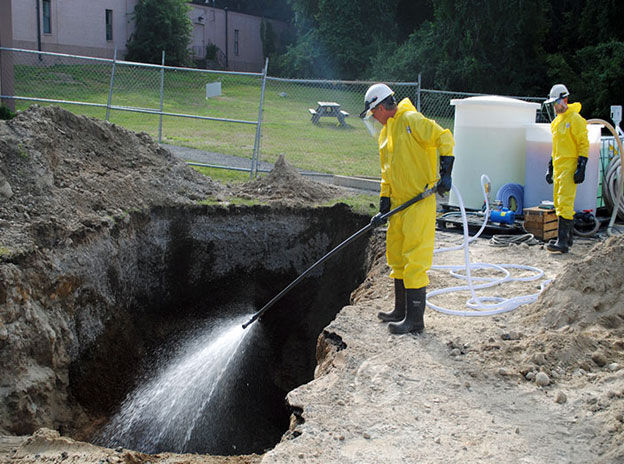Examples of pollutants include greenhouse gases, toxic chemicals, particulate matter, oil spills, radioactive contaminants, plastic waste, other forms of trash, and more. These contaminants can be released into the soil, air, and water (including groundwater) from activities such as mining, drilling, deforestation, chemical processing, agriculture (using pesticides and fertilizers), and manufacturing.
Contaminants that harm the earth can also be detrimental to human health. Toxic chemicals, for instance, can end up in drinking water and cause cancer, heart disease, respiratory diseases, neurological disorders, and other illnesses.
Groundwater remediation is the process that is used to treat polluted groundwater by removing the pollutants or converting them into harmless products. Groundwater is water present below the ground surface that saturates the pore space in the subsurface.
Contaminants found in groundwater cover a broad range of physical, inorganic chemical, organic chemical, bacteriological, and radioactive parameters. Pollutants and contaminants can be removed from groundwater by applying various techniques, thereby bringing the water to a standard that is commensurate with various intended uses.



